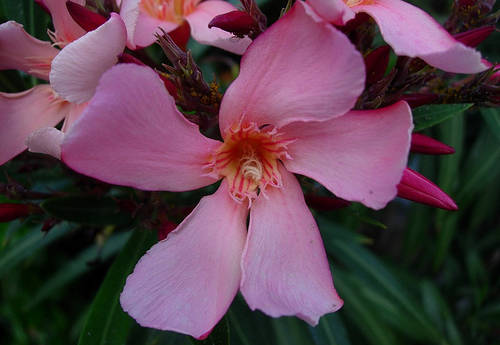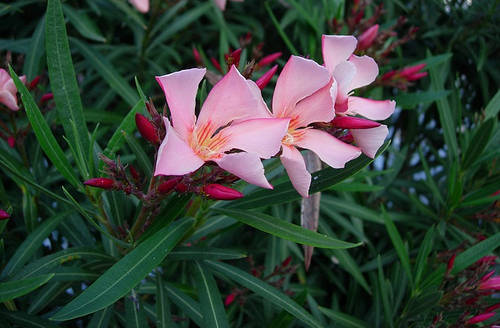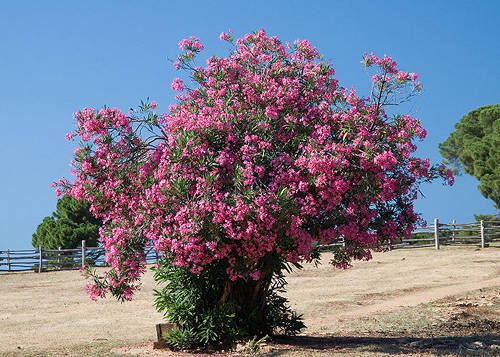
Names
Nerium oleander, Rose Laurel
Description
Evergreen shrub / tree, with thick, leathery leaves. Flowers grow in clusters and can be white, pink or red.

Concern Level
Very high, oleander is widely used in ornamental planting and an ounce of leaves can kill a full grown horse.
Toxic Parts
All parts of the plant.

Symptoms
Occur several hours after ingestion, colic, profuse sweating, bloody diarrhea, difficulty breathing, heart arrhythmia, sweating, lack of coordination, tremors, death from heart failure.
Danger
Contains toxins called oleandrin and neriin which disrupt normal heart function. Can be fatal.

More Information
International Oleander Society
*It should be noted that we are not veterinarians. This information is written specifically for horses and should be used for reference purposes only. If you think your horse has eaten something toxic call your vet right away.
